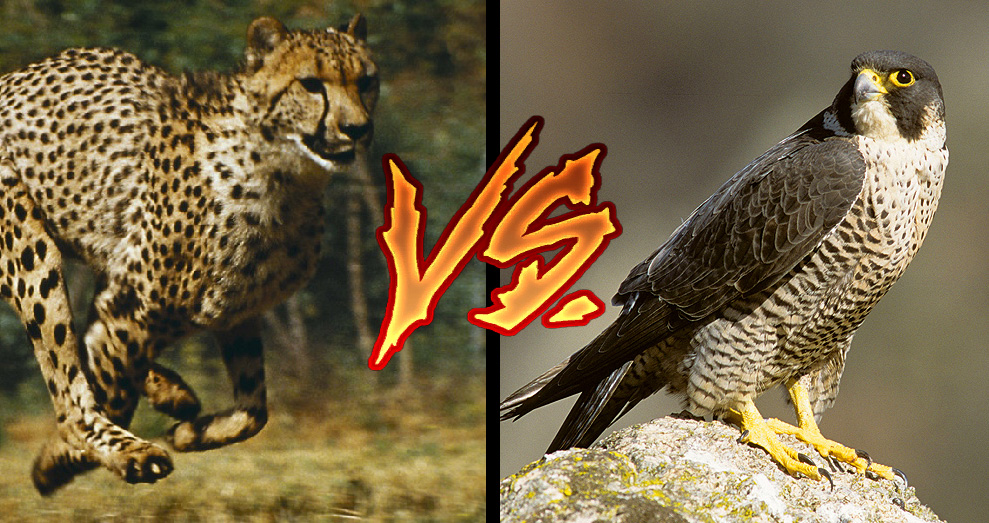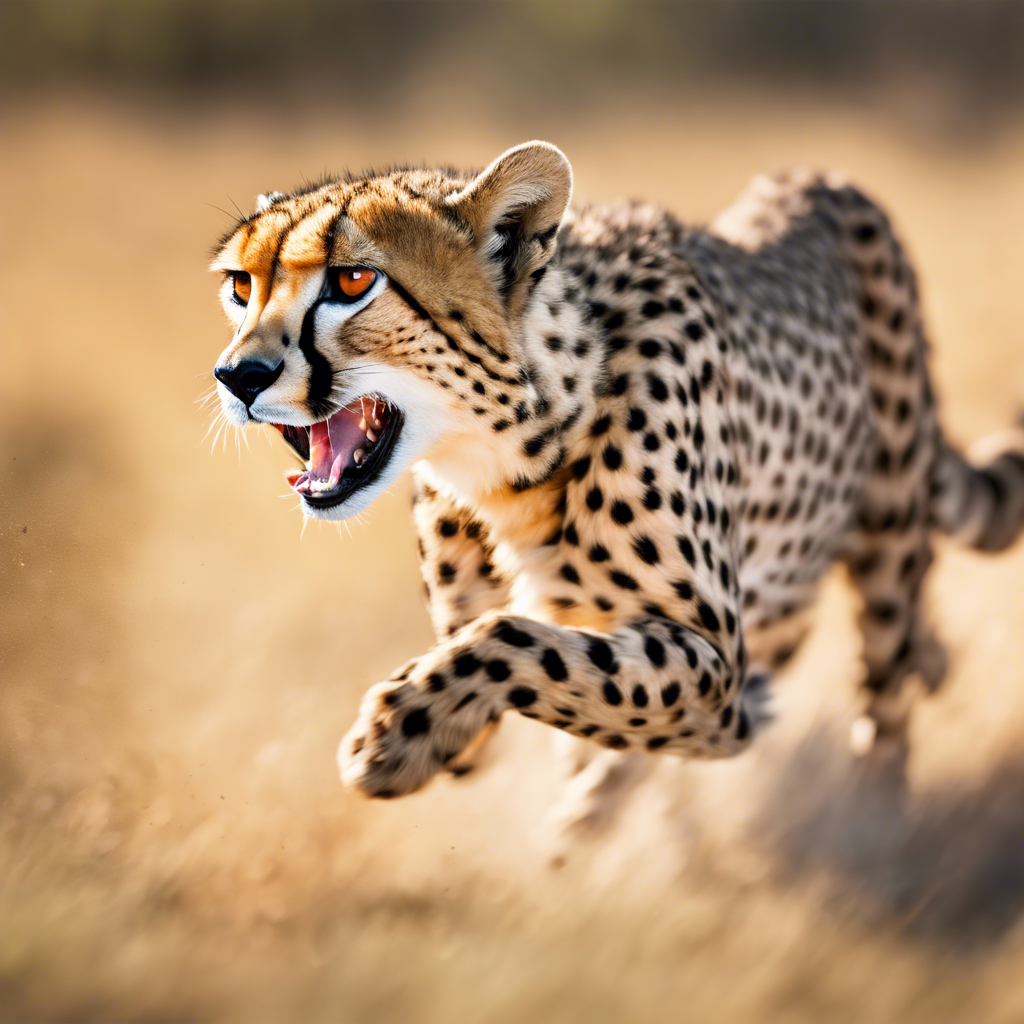What Is The Fastest Animal In The World?
Have you ever wondered which creature holds the title of the world's fastest animal? It's not just about speed on land—this question dives into the incredible world of nature and its most awe-inspiring athletes. The fastest animal in the world is not just a blur of motion; it’s a marvel of evolution, power, and precision. From land sprinters to sky divers, the race for speed is on, and you won’t believe what nature has cooked up!
When we talk about speed, we’re not just talking about how fast something can move from point A to point B. It’s about agility, acceleration, and the raw power that drives these animals to achieve incredible feats. Whether it’s a cheetah sprinting across the savannah or a falcon diving through the skies, the world’s fastest animals are nothing short of extraordinary.
So, buckle up, because we’re about to take you on a journey through the fastest creatures on land, in the air, and even in the water. By the end of this article, you’ll have a newfound appreciation for the incredible speed and adaptability of the animal kingdom. Let’s dive in!
Table of Contents
- Introduction
- The Fastest Land Animal
- The Fastest Flying Animal
- The Fastest Marine Animal
- Factors That Influence Speed
- Evolution and Speed
- How Humans Compare
- Common Myths About Speed
- Conservation of Fast Animals
- Conclusion
The Fastest Land Animal
When it comes to land speed, one animal stands head and shoulders above the rest—the cheetah. Known scientifically as Acinonyx jubatus, this big cat is built for explosive acceleration and unmatched agility. A cheetah can go from 0 to 60 miles per hour in just three seconds, making it the fastest land animal in the world. But how does it achieve such incredible speed?
First, let’s talk about the cheetah’s body design. Its lightweight frame, long legs, and flexible spine allow it to stretch and cover more ground with each stride. Plus, its non-retractable claws act like cleats, providing extra grip on the ground during high-speed chases. The cheetah’s oversized heart and lungs ensure that its muscles receive a constant supply of oxygen, enabling it to sustain short bursts of speed.
How Cheetahs Use Their Speed
Speed is more than just a party trick for cheetahs—it’s a matter of survival. In the wild, cheetahs rely on their incredible velocity to catch prey like gazelles and impalas. However, this speed comes at a cost. Cheetahs can only maintain their top speed for about 20 to 30 seconds before exhaustion sets in. This means they have to be strategic hunters, using stealth and surprise to get as close as possible to their prey before launching into a high-speed chase.
Here’s a quick breakdown of why cheetahs are the ultimate land speed demons:
- Top Speed: 60-70 mph
- Acceleration: 0 to 60 mph in 3 seconds
- Unique Features: Non-retractable claws, flexible spine, oversized heart and lungs
The Fastest Flying Animal
Now let’s take to the skies and meet the fastest animal in the air—the peregrine falcon. This majestic bird of prey is a true master of aerodynamics, capable of reaching speeds of over 240 miles per hour during its signature hunting dive, known as a stoop. The peregrine falcon’s speed is so impressive that it holds the Guinness World Record for the fastest animal on the planet.
What makes the peregrine falcon so fast? Its streamlined body, powerful wings, and incredible vision all play a role. During a stoop, the falcon tucks its wings close to its body, reducing drag and allowing it to plummet towards its prey with pinpoint accuracy. Its sharp talons are perfect for grabbing unsuspecting birds mid-flight, making it one of the most efficient hunters in the sky.
Adaptations for Speed
The peregrine falcon’s speed is not just about raw power—it’s about precision and control. Here are some of the adaptations that make this bird so incredibly fast:
- Streamlined Body: Reduces air resistance during flight
- Powerful Wings: Generate lift and thrust for high-speed dives
- Superb Vision: Allows the falcon to track prey from miles away
The Fastest Marine Animal
Under the sea, speed takes on a whole new meaning. The title of the fastest marine animal goes to the black marlin, a powerful fish that can swim at speeds of up to 82 miles per hour. Found in the warm waters of the Pacific and Indian Oceans, the black marlin is a true aquatic speedster, capable of covering vast distances in a short amount of time.
What makes the black marlin so fast? Its torpedo-shaped body, strong tail fin, and efficient swimming technique all contribute to its incredible speed. The black marlin is also a highly migratory species, traveling thousands of miles each year in search of food and suitable breeding grounds. Its speed allows it to cover these long distances quickly and efficiently.
Black Marlin’s Speed Secrets
Here’s a closer look at what makes the black marlin such a fast swimmer:
- Torpedo-Shaped Body: Minimizes water resistance
- Strong Tail Fin: Provides propulsion and maneuverability
- Efficient Swimming Technique: Maximizes energy use
Factors That Influence Speed
Speed is not just a matter of having the right body shape or physical attributes. Several factors influence how fast an animal can move, including:
- Body Size: Larger animals tend to be slower due to increased weight and drag
- Muscle Structure: Animals with fast-twitch muscle fibers are better suited for short bursts of speed
- Environmental Adaptations: Animals that live in open environments, like savannahs or oceans, often evolve to be faster
Understanding these factors helps us appreciate the incredible diversity of speed in the animal kingdom. From the cheetah’s explosive sprints to the peregrine falcon’s high-speed dives, each animal has adapted to its environment in unique ways.
Evolution and Speed
Speed is a product of evolution, shaped by millions of years of natural selection. Animals that could move faster had a better chance of survival, whether it was to catch prey or evade predators. Over time, these advantageous traits were passed down through generations, leading to the incredible speeds we see today.
For example, the cheetah’s speed is the result of millions of years of evolution in the African savannah. Its ancestors likely developed their sprinting abilities to outcompete other predators for food. Similarly, the peregrine falcon’s speed is a result of its need to catch fast-moving birds in mid-air.
The Role of Natural Selection
Natural selection plays a crucial role in determining which animals become the fastest. Traits that improve an animal’s chances of survival and reproduction are more likely to be passed on to future generations. This means that speed, agility, and other advantageous traits are constantly being refined and improved over time.
How Humans Compare
While humans may not be able to compete with cheetahs or peregrine falcons in terms of speed, we’ve certainly found ways to enhance our own abilities. The fastest human ever recorded is Usain Bolt, who reached a top speed of 27.8 miles per hour during his record-breaking 100-meter sprint. While this may seem impressive, it pales in comparison to the speeds achieved by animals like the cheetah or peregrine falcon.
That being said, humans have developed incredible technology to help us move faster. Cars, planes, and even bicycles allow us to travel at speeds that would be impossible for any animal to achieve on its own. But when it comes to raw, unassisted speed, we still have a long way to go.
Common Myths About Speed
There are plenty of misconceptions about the fastest animals in the world. For example, many people believe that the ostrich is the fastest land animal, but this is simply not true. While ostriches are incredibly fast runners, capable of reaching speeds of up to 43 miles per hour, they still fall short of the cheetah’s top speed.
Another common myth is that the blue whale, the largest animal on Earth, is also the fastest. In reality, the blue whale is a slow swimmer, relying on its massive size and strength to dominate the oceans. The black marlin, on the other hand, is far more agile and much faster.
Conservation of Fast Animals
Many of the world’s fastest animals are facing threats to their survival, including habitat loss, climate change, and human activities. Conservation efforts are crucial to ensure that these incredible creatures continue to thrive in the wild.
For example, cheetah populations have declined dramatically over the past few decades, with only around 7,000 individuals remaining in the wild. Organizations like the Cheetah Conservation Fund are working tirelessly to protect these majestic animals and their habitats.
Similarly, peregrine falcons were once on the brink of extinction due to the use of harmful pesticides like DDT. Thanks to conservation efforts and the banning of these chemicals, peregrine falcon populations have rebounded in many parts of the world.
Conclusion
The world’s fastest animals are truly remarkable, showcasing the incredible diversity and adaptability of the natural world. From the cheetah’s explosive sprints to the peregrine falcon’s high-speed dives, these creatures remind us of the power and beauty of evolution.
As humans, we may not be the fastest animals on the planet, but we can certainly appreciate and learn from the incredible speeds achieved by our fellow Earthlings. By supporting conservation efforts and protecting the habitats of these amazing animals, we can ensure that they continue to inspire and amaze us for generations to come.
So, what do you think? Did you learn something new about the fastest animals in the world? Let us know in the comments below, and don’t forget to share this article with your friends and family. Together, we can spread the word about the incredible speed and adaptability of the animal kingdom!



Detail Author:
- Name : Amari Stiedemann
- Username : vincenzo96
- Email : dfeeney@yundt.info
- Birthdate : 2005-06-09
- Address : 22351 Trantow Hill Apt. 517 West Mohamedville, GA 40801
- Phone : +1-601-950-7140
- Company : Purdy-Little
- Job : Cutting Machine Operator
- Bio : Laboriosam magnam ipsa sed fuga nam. Dolorum minus consequuntur id omnis quia placeat. Veritatis omnis voluptatem quaerat dolorem nihil adipisci.
Socials
twitter:
- url : https://twitter.com/carroll1991
- username : carroll1991
- bio : Sed aut nobis voluptas omnis. Id tempore odio eum corporis nemo voluptas. Voluptatibus quidem eum quo omnis.
- followers : 3421
- following : 2825
instagram:
- url : https://instagram.com/anissa_id
- username : anissa_id
- bio : Sit at et qui a blanditiis iste. Totam nulla est ut vero.
- followers : 4597
- following : 2678
tiktok:
- url : https://tiktok.com/@anissa_carroll
- username : anissa_carroll
- bio : Voluptate velit et veritatis consectetur odit architecto.
- followers : 3827
- following : 2314